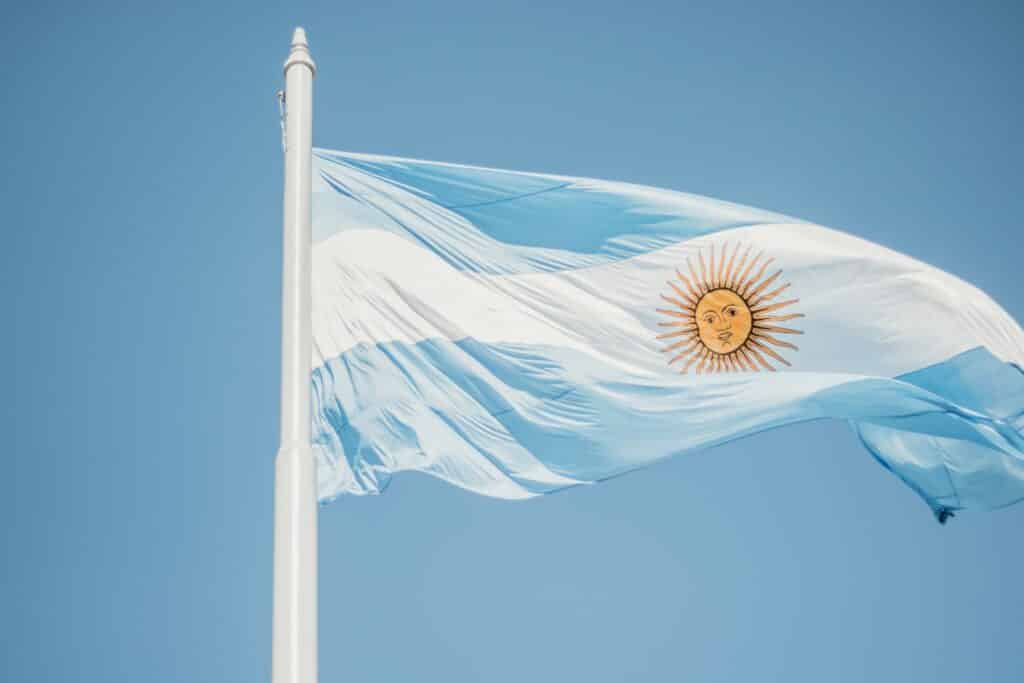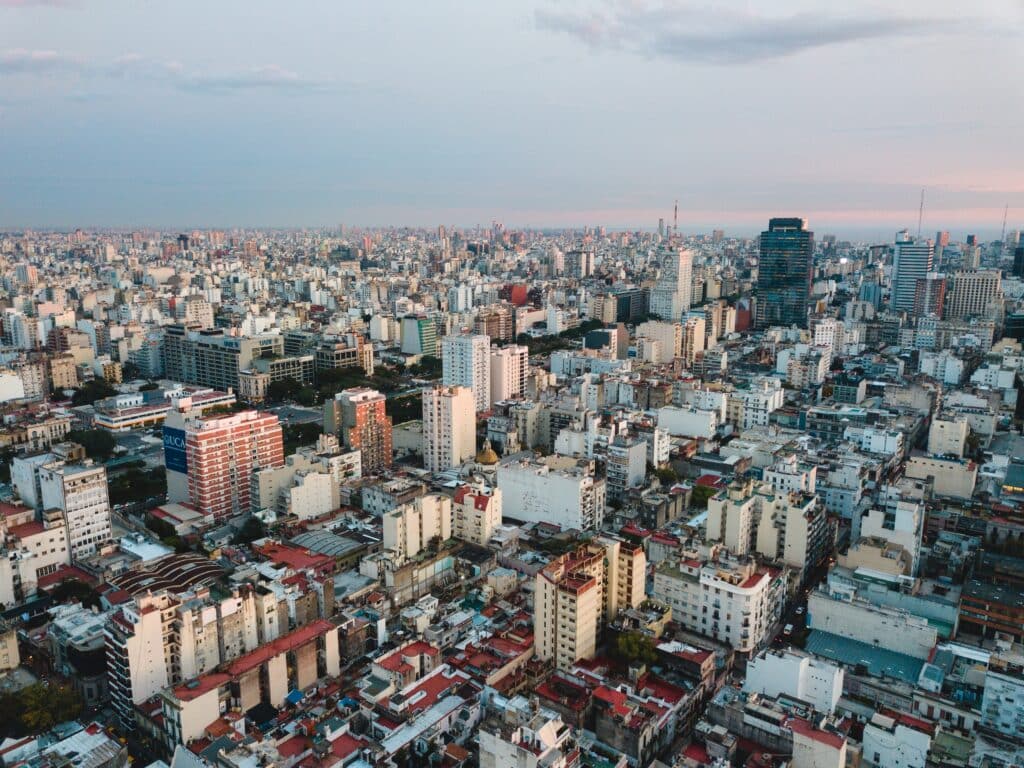Argentina’s national currency is the Argentinian nuevo peso — more commonly known in its country as “Argentine peso” or just “peso.” Like the U.S. dollar, it is represented by the “$” symbol, which is written before the amount. Its ISO currency code is “ARS.” Each peso can be subdivided into 100 centavos.
Argentine currency is issued by the Banco Central de la República Argentina, and cash is distributed in the form of coins and banknotes.
Coin denominations:
- 1, 5, 10, 25, and 50 centavos
- 1 and 2 pesos
Banknote denominations:
- 1, 2, 5, and 10 pesos
The Argentinian nuevo peso has been in use since 1992. It followed a series of different currencies introduced throughout Argentina’s history. Continue reading to learn more about the currencies’ fascinating history.

Brief History of Argentinian Currency
In the 1700s, citizens of Argentina and neighboring countries used gold and silver coins. It wasn’t until the early 1800s that paper currency existed, starting with the peso fuerte. The peso fuerte was the first convertible currency and could be exchanged at a rate of 17 pesos to one Spanish ounce of gold. There was another type of paper currency circulating at the same time that was not convertible — the “peso moneda corriente,” or “everyday currency.”
In 1881, the government combined the two currencies into its first national currency, the “peso moneda nacional.” It was issued in the form of coins and paper money.
The peso moneda nacional remained in use until 1970, when it was replaced with the “peso ley.”
In 1983, the peso ley was replaced by the “peso argentino,” which served as the national currency from until 1985.
The “austral” replaced the peso argentino in 1983 and lasted until 1991. During this time, Argentina suffered from hyperinflation.
The austral was finally replaced by the current peso, which is also known as the “convertible peso.”
In 1992, the Central Bank of Argentina established a fixed exchange rate of 1 USD = 1 Peso. The agreement was discontinued in 2001, leaving the Argentine peso with fluctuating exchange rates.
Exchange Rate
To see the current exchange rate between Argentine pesos and U.S. dollars, check out today’s rate with Remitly.

Unique Design Elements of the Argentine Peso
In recent years, the peso has transformed as old bills have become worn and tattered. Many Argentine banknotes feature war heroes and freedom fighters in a typical horizontal format. Newly issued money focuses on the country’s flora and fauna, which appear vertically.
- $5: The front features a portrait of José de San Martín (1778-1850), an Argentine general touted as the “Liberator of Argentina, Chile, and Peru.” The back shows San Martín with freedom fighters from other South American countries.
- $10: This bill has a picture of Manuel Belgrano (1770-1820), a lawyer, economist, and military leader. He’s credited with helping Argentina fight for independence and creating the Argentine flag, which graces the back of the bill.
- $50: The $50 bill showcases the Falkland Islands (Islas Malvinas). The back includes an image of Antonio Rivero, a patriotic hero who rebelled against the British. Images representing losses in the war include the Malvinian Seagull, the Darwin Cemetery, and the General Belgrano warship.
- $100: The likeness of Eva Peron (1919-1952), former First Lady of Argentina, adorns the front of this peso. The Tony-winning musical Evita is based on her rags-to-riches life story. The back of the bill features Ara Pacis Augustae (“Altar of Augustan Peace”), a Roman sculpture dedicated to Pax, goddess of peace.
- $200: A southern right whale representing the Argentine Atlantic appears on the $200 bill. The back shows Patagonia, off the coast of which thousands of whales go to mate. This peso design marks the beginning of the trend of using natural imagery on the currency.
- $500: The jaguar, the largest cat found in northern Argentina, appears on the front along with pink flowers. Its jungle habitat is shown on the back.
Fun Facts About Argentina
Argentina, officially called the Argentine Republic, is the largest Spanish-speaking country in the world. Located in the southern half of South America, Argentina covers 1,073,500 square miles. Its federal capital city of Buenos Aires is the largest in the nation.
National Symbols of Argentina
The national symbols of Argentina include the colors light blue and white and the golden “Sun of May.” These symbols are used in the design of the Argentine Flag and Argentine Coat of Arms. The sun symbol also appeared on the first Argentine coin.
Argentine Culture and Shopping
Argentina is rich in culture with many influences from Spanish, Italian, and Amerindian cultures. They are present in the country’s culinary traditions and art, among other things. Most Argentinians speak Spanish. The U.S. dollar is widely accepted in addition to the Argentine peso.
Argentina’s Name
Argentina (derived from the Latin word argentum, which means “silver”) is the only country named after a metal. The Spanish word for silver, plata, is commonly used to refer to money.

Send Money to Argentina
You can send money to Argentina with Remitly. New customers may be eligible for a special offer on their first transfer.
Further reading
- The 11 Most Beautiful World Currencies
- New! Send Money in Your Preferred Language with the Remitly App
- Today’s U.S. Dollar (USD) Exchange Rate with Remitly: Dollar to Peso and More